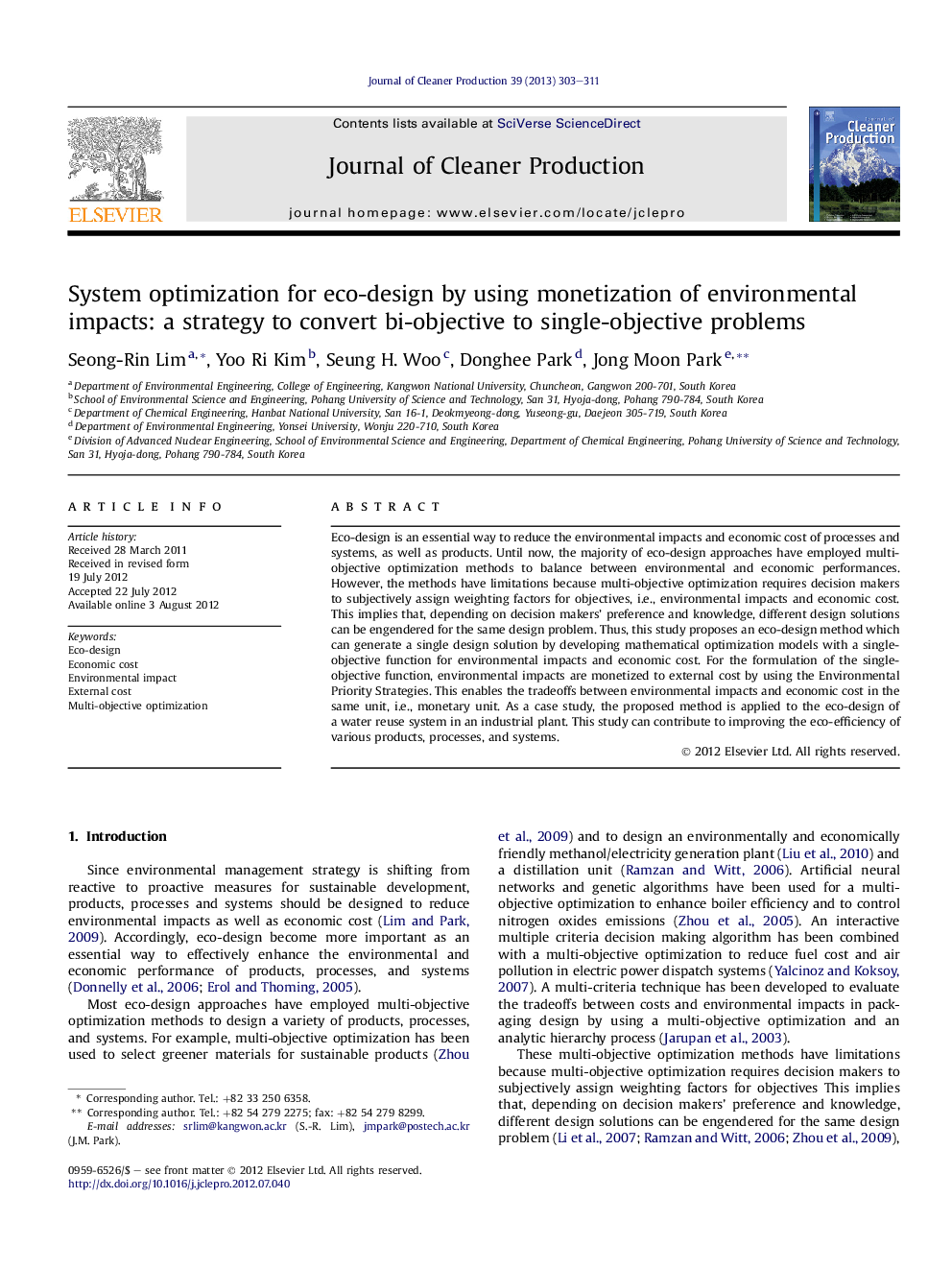| Article ID | Journal | Published Year | Pages | File Type |
|---|---|---|---|---|
| 8107798 | Journal of Cleaner Production | 2013 | 9 Pages |
Abstract
Eco-design is an essential way to reduce the environmental impacts and economic cost of processes and systems, as well as products. Until now, the majority of eco-design approaches have employed multi-objective optimization methods to balance between environmental and economic performances. However, the methods have limitations because multi-objective optimization requires decision makers to subjectively assign weighting factors for objectives, i.e., environmental impacts and economic cost. This implies that, depending on decision makers' preference and knowledge, different design solutions can be engendered for the same design problem. Thus, this study proposes an eco-design method which can generate a single design solution by developing mathematical optimization models with a single-objective function for environmental impacts and economic cost. For the formulation of the single-objective function, environmental impacts are monetized to external cost by using the Environmental Priority Strategies. This enables the tradeoffs between environmental impacts and economic cost in the same unit, i.e., monetary unit. As a case study, the proposed method is applied to the eco-design of a water reuse system in an industrial plant. This study can contribute to improving the eco-efficiency of various products, processes, and systems.
Related Topics
Physical Sciences and Engineering
Energy
Renewable Energy, Sustainability and the Environment
Authors
Seong-Rin Lim, Yoo Ri Kim, Seung H. Woo, Donghee Park, Jong Moon Park,
